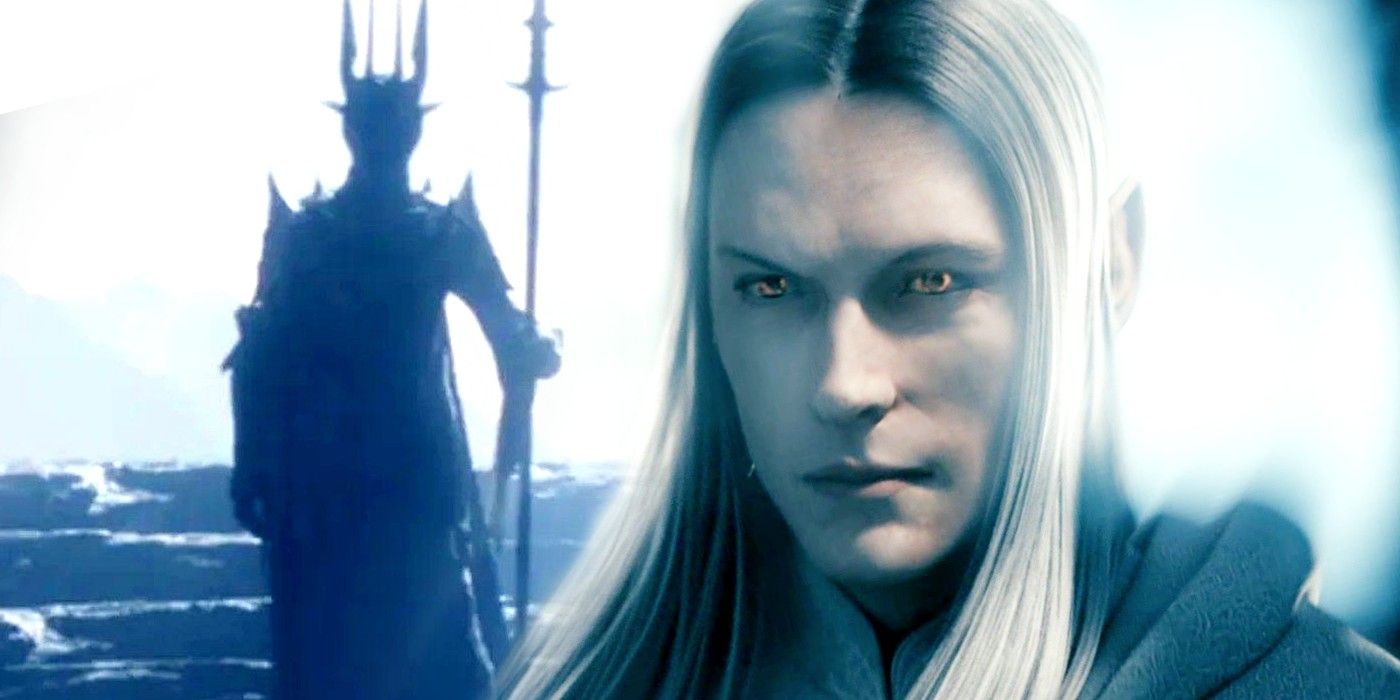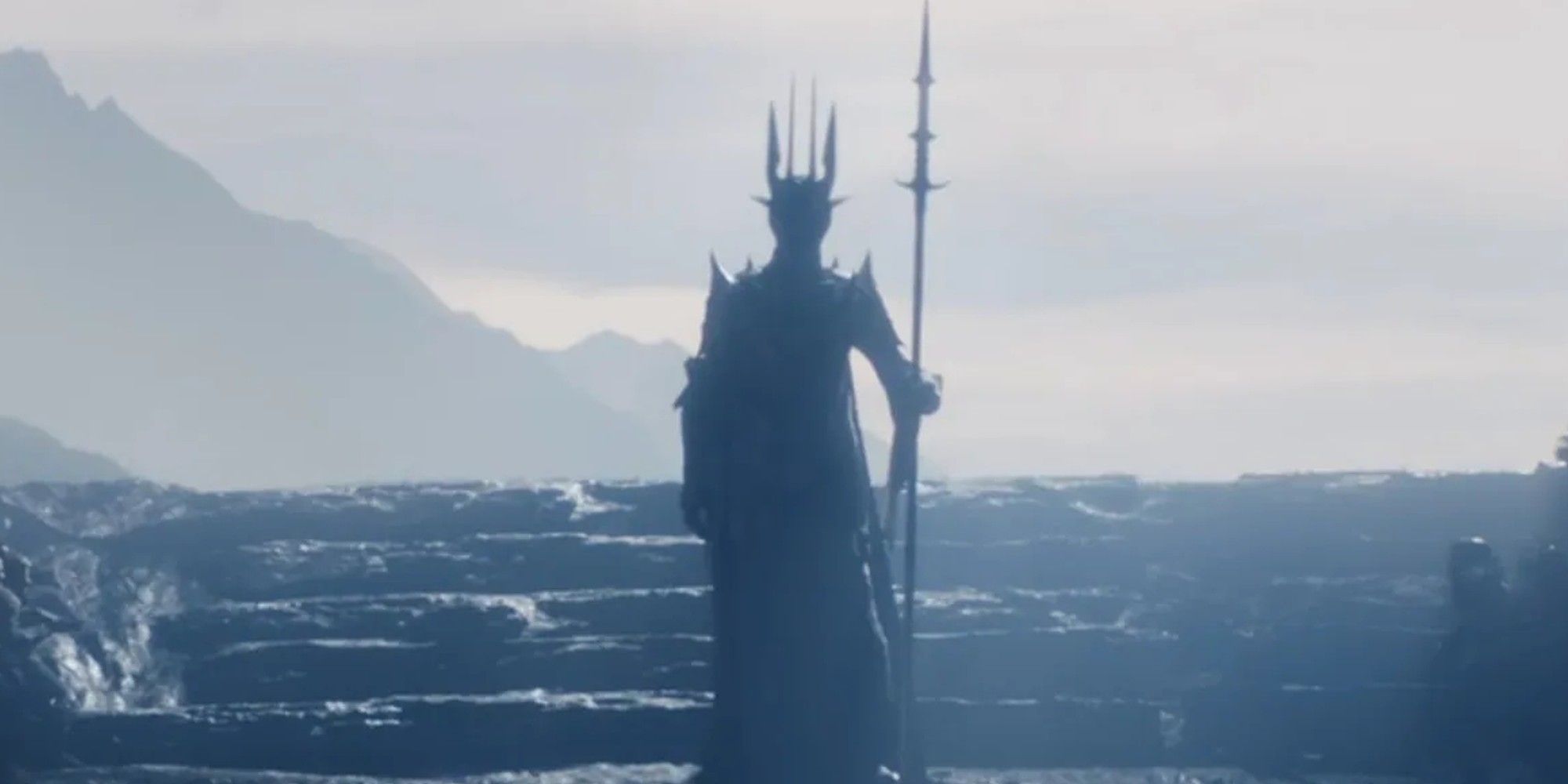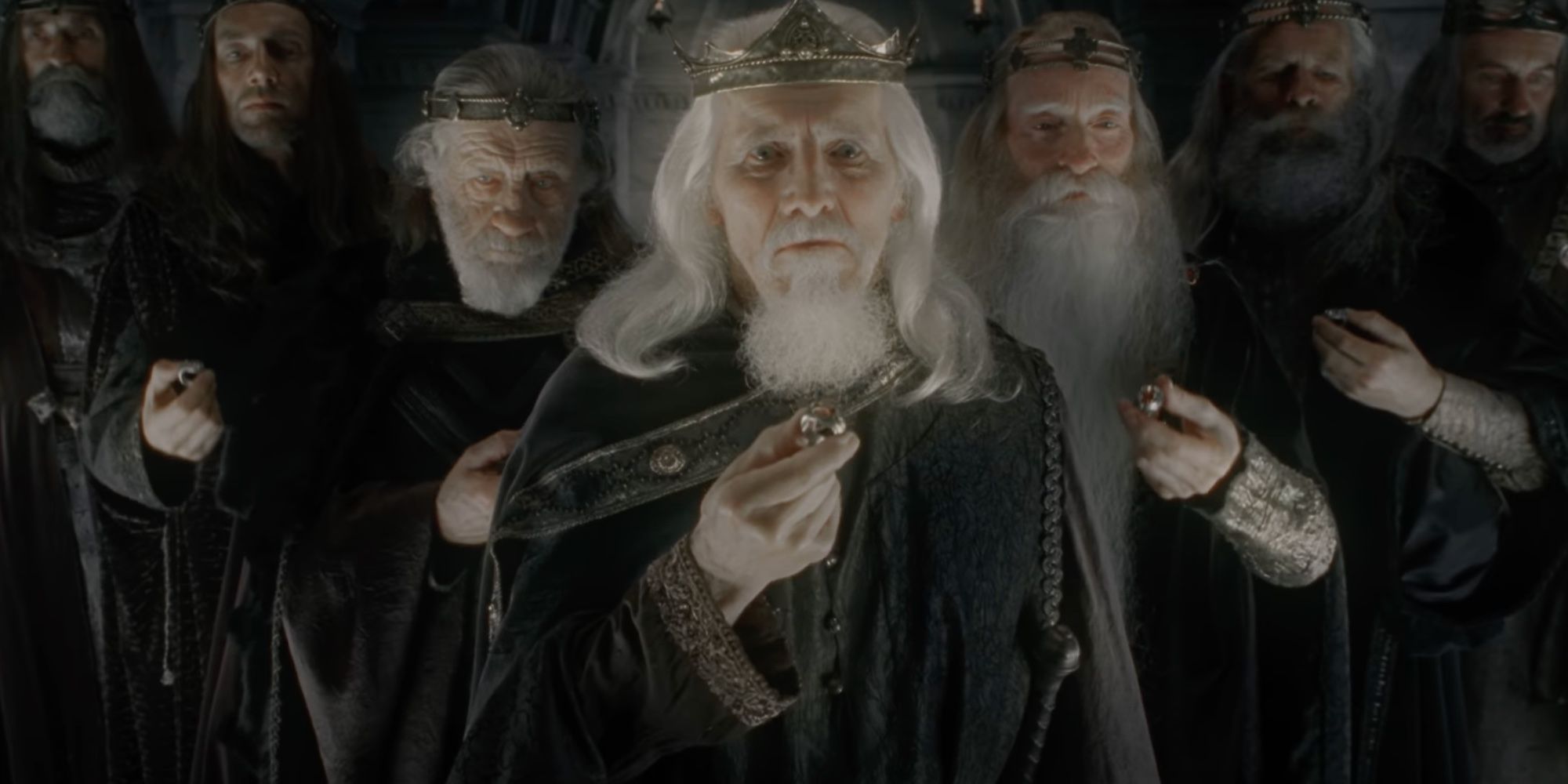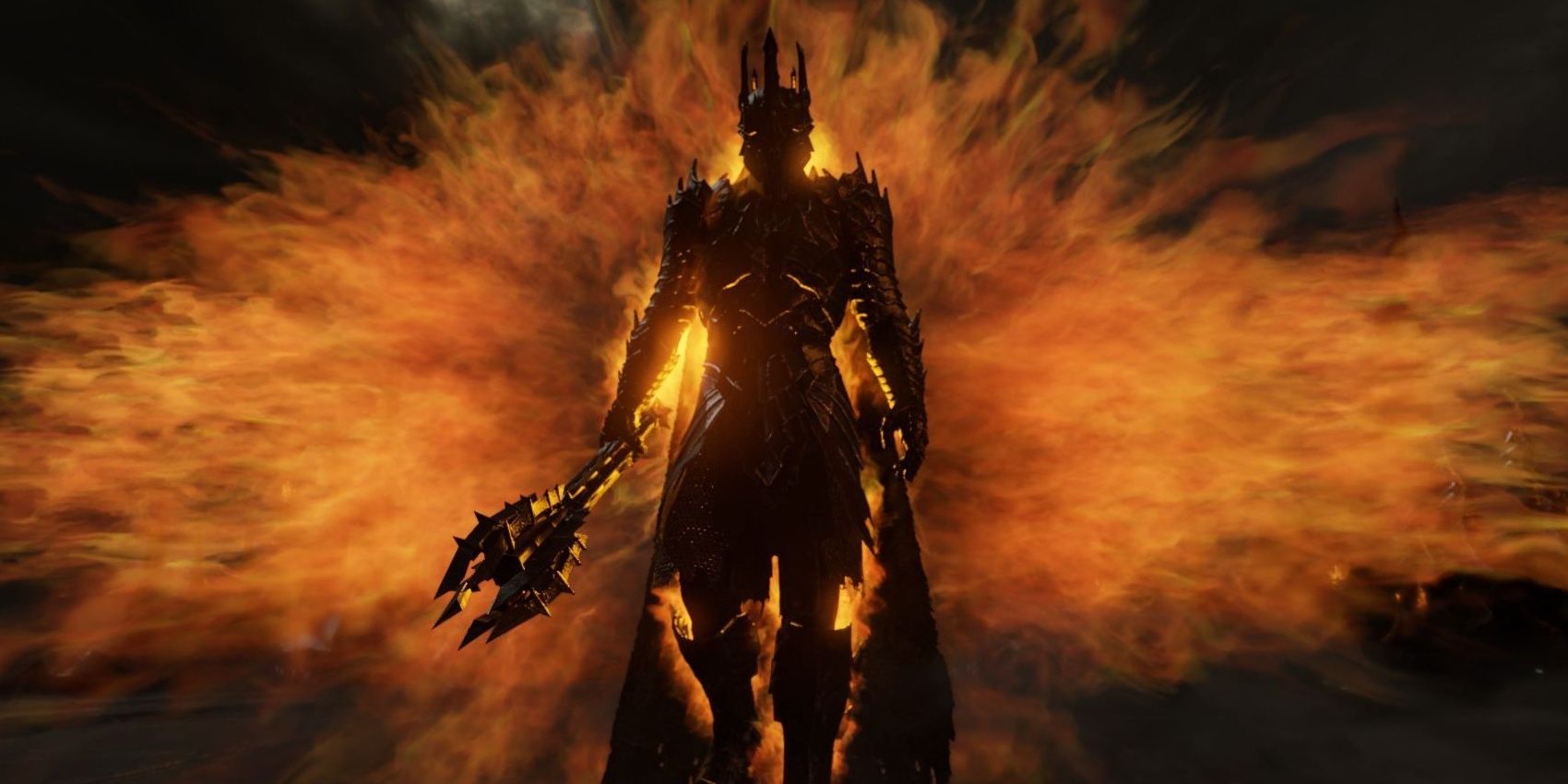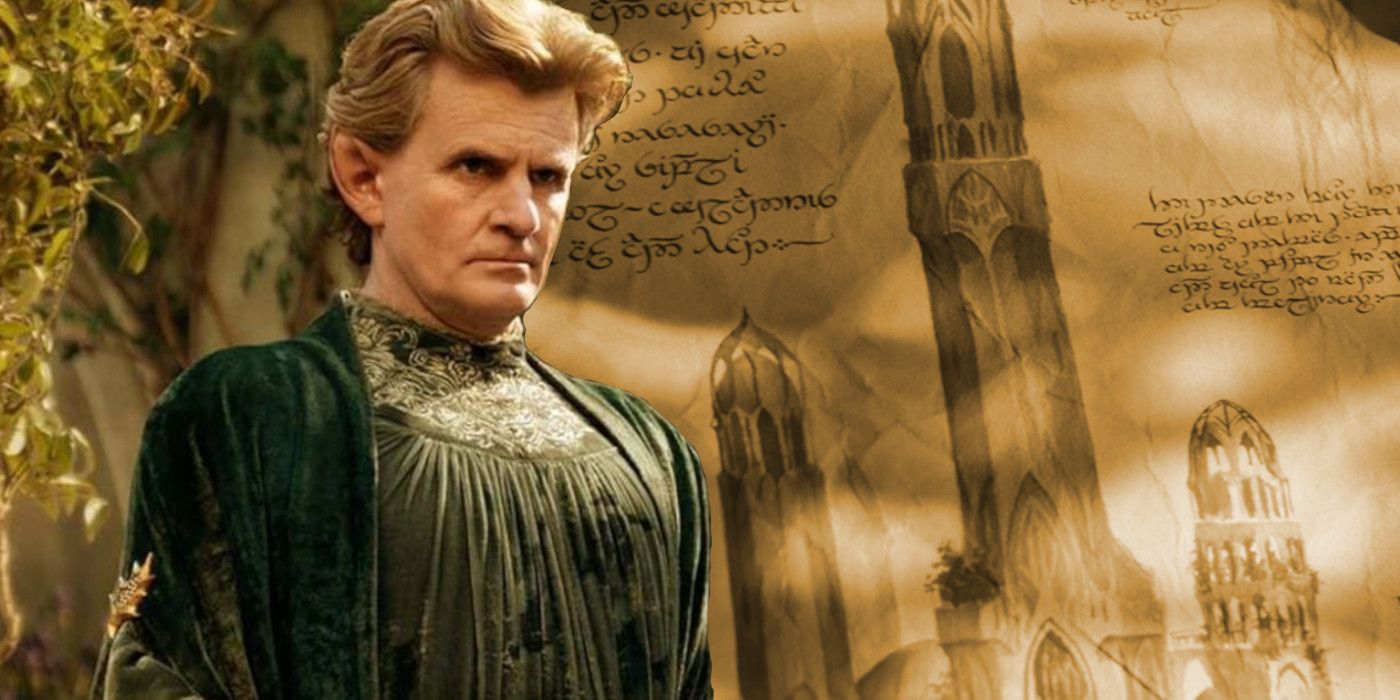Sauron's Annatar form causes havoc in The Lord of the Rings mythology - here's how the disguise came to be, what Sauron used it for, and why he stops shape-shifting in later years. One of the most famous fictional villains of all time he may be, but Sauron's physical appearance has always remained somewhat ambiguous. J.R.R. Tolkien describes Sauron (or more accurately doesn't describe him) in only the vaguest possible terms, and the popularized images of a towering warrior in black armor or a flaming eye atop Barad-dûr come mostly from Peter Jackson's The Lord of the Rings movie trilogy, which extrapolates small clues within Tolkien's text into a literal design.
Tolkien gets a little more descriptive about Sauron's appearance in Middle-earth's Second Age, which provides the setting for Amazon's The Rings of Power TV series. As the era begins, Sauron is licking his wounds following Morgoth's defeat. Upon finally reappearing, he takes the disguise of "Annatar," which Tolkien labels a "fair form" without ever really offering firm details. As Annatar will almost certainly play a major role in The Rings of Power season 2, here's everything Middle-earth mythology reveals about Sauron's favorite face.
Sauron's Shape-shifting Powers Explained
Though best known for his work in the field of warmongering, Sauron began as one of the Maiar - primordial, angel-adjacent, immortal spirits created as servants to the God of Tolkien's world, Eru Ilúvatar. Sauron would be corrupted by Melkor (later known as Morgoth), who was a higher-ranking spirit turned evil through greed, jealousy, and anger. All Maiar possess the ability to assume whatever physical form they desire, and many utilized this gift to mingle unseen among Elves and other Children of Ilúvatar. Sauron had other ideas, and exploited his shape-shifting to create a one-man Halloween party of guises - werewolves, serpents, vampires, as well as a great and terrible base form (depicted in live-action as the black armor design).
During J.R.R. Tolkien's First Age, Sauron would change shape as a means of inspiring fear within his enemies. As the Second Age began, he perhaps realized the opposite would prove more effective, and returned to Middle-earth as "Annatar." Described by Tolkien as a "fair form," the author never offers a clear account of Annatar's handsome visage, but taking into consideration the kingdoms who accepted him as a valued friend, many have logically assumed Sauron's Annatar form was akin to an Elf or Númenórean.
The "Annatar" name was part of Sauron's deception too. The word means "Lord of Gifts" in the Quenya language of Elves - an allusion to how he promised knowledge, glory, wealth and power to all those who heeded his great wisdom.
How Annatar Deceived Middle-earth's Elves
Sauron's first order of business as "Annatar" was deceiving the Elves, and duly made for Eregion, where the race's best smiths welcomed him. It's important to note that not all Elves trusted Annatar. The likes of Elrond, Gil-galad and Galadriel all deduced the newcomer's promises were too good to be true, and Annatar wouldn't venture near Lindon or Lothlórien as a result. Furthermore, none of the Elves - not even the suspicious ones - realized the deceitful Annatar was actually Sauron in disguise.
Sauron's purpose in Eregion was creating the Rings of Power. As a Maia, Sauron had served under Aulë, widely considered the god of blacksmiths and worshiped by Dwarves. Consequently, Sauron knew as much about craftsmanship as he did dark magic, and he put both to work while in Eregion. The Elves were keen to craft Rings of Power, and Sauron willingly offered his divine expertise on the matter. As recounted in The Fellowship of the Ring, Sauron betrayed his new friends by weaving a method of corrupting those who wore the Rings into their forging. The sixteen Rings of Power later held by Dwarves and Men were directly influenced by Annatar. The Elves' three Rings were crafted by Celebrimbor personally, but still using Sauron's sinister method. Annatar then skulked back to Mordor and made his Ruling Ring, and only when Galadriel, Gil-galad and Círdan slipped on their three Rings did the Elves finally realize how badly they'd messed up.
Did Sauron Use His Annatar Form On Númenor?
Over a thousand years after attempting to enslave Middle-earth using the Rings of Power and failing, Sauron once again stood on the brink of defeat when an army of Númenóreans led by Ar-Pharazôn sailed to Middle-earth, greatly aggrieved that the Dark Lord had declared himself the land's undisputed ruler. Sensing imminent defeat, Sauron humbled himself before the tyrannical King of Númenor and was taken prisoner. There's a cloud of ambiguity over which physical form Sauron adopted during his time on the island kingdom. Tolkien's writing heavily suggests the villain once again transformed into a "fair" shape, but never explicitly states whether Sauron recycled Annatar or picked something more befitting for his mortal hosts, and convincing arguments can be made both ways. Whatever he might've looked like, Sauron didn't stick with the "Annatar" moniker, since the people of Númenor already knew his true identity.
As he did with the Elves, Sauron charmed and manipulated those around him in Númenor. Instead of promising gifts and lore, however, he stoked the Númenóreans' existing anger toward the Valar, pushing them toward worshiping Morgoth instead. Sauron rose from a prisoner to Ar-Pharazôn's most valued advisor, ultimately convincing the King to embark on a foolhardy assault on Valinor.
Why Annatar Isn't In The Lord Of The Rings
The Lord of the Rings fans hearing Annatar's exploits for the first time may find themselves wondering why Sauron didn't slip on this disguise to infiltrate the Shire or trick Frodo into handing over the One Ring. The answer is simple enough: Sauron lost his ability to shape-shift after the Second Age. The incident on Númenor invoked Eru Ilúvatar's godly wrath, and Arda's usually-distanced deity intervened directly by wiping the island from his map and reshaping the realm to push Valinor out of reach. As part of Sauron's personal punishment, Eru stole away the Maia's ability to take a fair form, evidently sick of watching him corrupt the people of Middle-earth through charm, deception and good looks. After the fall of Númenor, therefore, Sauron can only take his dark and terrible form - the one Peter Jackson depicts as a towering foe clad in black armor. This shape's true design will remain forever ambiguous, but Tolkien does twice make reference to black hands.
What Sauron's Annatar Form Means For The Rings Of Power Season 2
Annatar looks set to play a major role in The Rings of Power season 2, suggesting the Amazon show's sophomore run will focus predominantly upon forging the Rings of Power themselves. It's easy to see how conflict could then arise between the already-very-skeptical Galadriel and her fellow Elves. Given how Gil-galad and Celebrimbor are characterized more negatively in live-action, they won't necessarily share their literary counterparts' Annatar suspicion. Maybe the decisive voice will belong to Robert Aramayo's Elrond, the most level of Elven heads and a friend to both Galadriel and Celebrimbor.
J.R.R. Tolkien doesn't write about Annatar's deception in great detail. The specifics of how Sauron gained the Elves' trust and how he convinced them to honor his evil designs are deliberately left to the reader's imagination. The Rings of Power will find plenty of room to color between Tolkien's lines, exploring exactly what Annatar looked like and how he was able to cajole Eregion's Elves into such a massive act of self-destruction. Even more significantly, Annatar's presence in The Rings of Power season 2 would leave no choice but to portray Sauron's true personality beyond a faceless, terrible force seeking to dominate Middle-earth.
Slow pacing has proved a recurring The Rings of Power season 1 criticism, and that issue is exemplified by how the Rings of Power themselves are almost entirely absent aside from very vague allusions. Debuting Annatar in season 2 would signal The Rings of Power moving into the meaty substance of its chosen period from Tolkien's The Lord of the Rings mythology, potentially easing those moans about slow pacing.
Join Amazon Prime - Watch Thousands of Movies & TV Shows Anytime

